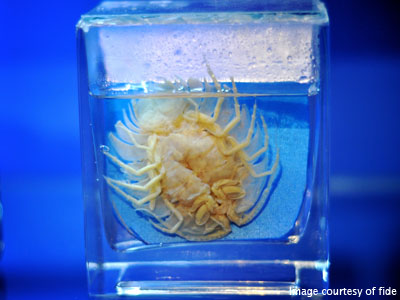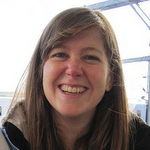Biodiversity is the spice of life
Posted on 20 October 2011
Biodiversity is the spice of life
 By Kathryn Rose, a Software Sustainability Institute Agent.
By Kathryn Rose, a Software Sustainability Institute Agent.
Despite being associated with the icy landmass of Antarctica, the Southern Ocean hosts an abundance of marine life. Whilst most people might associate this wildlife with whales, seals and penguins, what many do not realise is that the majority of this great biodiversity is actually located on the sea floor (over 8,500 known species so far). In light of this, the International Polar Year saw the launch of the Census of Antarctic Marine Life, an international initiative established to investigate and record the distribution and abundance of marine life in the Southern Ocean. This work will contribute new insight into the complex biology of the Southern Ocean and how this system is responding to global environmental change.
Dr. Huw Griffith, of the British Antarctic Survey, was one of a group of UK based scientists to travel to the Antarctic to participate in the census. Working for several months at a time on board a ship in the Southern Ocean, the team was able to record countless new species. The quantity and significance of the data collected by both Dr. Griffiths, and numerous groups participating from other nations, highlighted the need for a robust database and software system to support such a large-scale survey.
The project required a system that would allow all the new species data to be located in one global database. Consequently, the initiative worked hard, in collaboration with a team from the Belgian Biodiversity Platform, to establish such a database and the software required to support it. The system has to be accessed globally, allowing data inputs to be made by numerous different parties, whilst retaining the same format. In addition to providing workspaces for the wide variety of different flora and fauna that continue to be discovered, the software also provides information for the Barcode of Life - a molecular barcoding project. This project draws on cutting edge DNA barcoding techniques to classify the new species that are identified by the census, and the database will provide a home for this work. If that wasn't enough, the software is also able to combine information to provide the user, not only with the datasets they require, but also with maps associated with the location of surveys and the sampling carried out in those regions.
The system developed for the census represents a benchmark for global system databases, and currently holds in excess of a million records. It demonstrates how software can be designed intelligently to fulfil the requirements of both the provider and the end user. I would suggest that the system should be used as a blueprint for establishing other databases that are of global significance and require access on a global scale.

